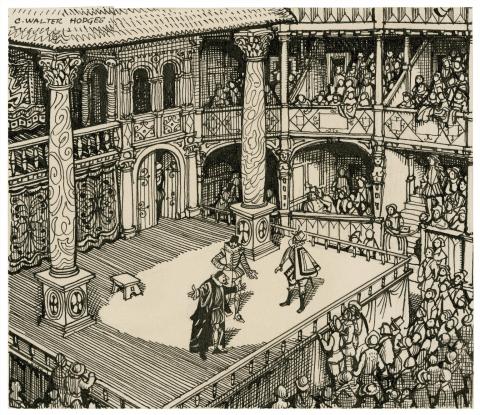Shakespeare's poetry Part 5

Here Shakespeare really "sweet", as in many other verses of their poems, but the interesting it becomes when amazes us with unexpected metaphors, the prevailing. In sonnet 124 reads: love can be a random act, and then she's the illegitimate birth; but love is the true passion, and she is the child legitimate. Illegal children are dependent on the vagaries of fate, destined to legitimate a particular, and their right no one can be challenged. In this strange comparison it is not difficult to see the reflection of the social conditions of the era of Shakespeare. In sonnet 134, built on legal concepts of that time. The property owner could pawn it and get his money. Returning the Deposit, he received their property back. This operation was needed all kinds of formalities, including the guarantee of persons with sufficient income, to give a guarantee of the transaction.
If the poem is mainly still in the sphere of the perfect romantic traditions of poetry of the Renaissance, sonnets are characterized by a fairly significant departure from this tradition. All the same, and they are poetic art complex and largely contingent character. This was due to the General concept of poetry, characteristic of Renaissance humanism.
Already in antiquity became friends poetry with philosophy, and, as is well known, Aristotle argued in his "Poetics" that poetry is philosophic history. Great philosopher of antiquity was pointed out that the task of art is not limited to the depiction of reality, it should offer meaningful play, where will be found the laws which govern life. In the middle ages poetry, like other types of intellectual property, was in subjection to theology. Even love poems experienced the influence of medieval scholastic thought, especially, for example, Dante. Spiritual emancipation that occurred in the Renaissance had an effect on poetry, which is imbued with a secular spirit. But the philosophical tradition has survived in the humanistic poetry, finding a new ideological orientation, due to the spiritual aspirations characteristic of the Renaissance worldview.
If in the chivalric poetry of the troubadours love was extolled as a sensual joy, Dante and the poets of the "sweet new style" earthly love is justified to the extent to which it expresses the human desire for spirituality.
The struggle is earthly, sensual and spirituality pervades both the philosophy and poetry of the Renaissance. Three trends characterize the solution to the problem of love in the Renaissance literature. This issue has become the focus of all issues related to the nature of man, his physical and spiritual nature. If one of the currents of humanistic thought, was characterized by the desire to rehabilitate the flesh, in contrast to his neo-Platonic philosophy of the Renaissance emphasized in the person of his spiritual abilities. Between these two extreme positions were the trend, which sought a synthesis of the spiritual and the physical in man.
Poetry of the English Renaissance reflects these trends. Since the first of the English poets Wyatt and Surrey to Spenser can be seen as sensually sensualities understanding of love increasingly gives way to neo-Platonic spiritualism. The greatest poets of the English Renaissance Edmund Spenser - the struggle of the earthly and heavenly, sensual and spiritual ends with the victory of spirituality. Lyric and narrative poetry 1580-1590-ies in all ways ranging topics related to this problem.

Since the topic of love is human nature, it is natural that in the consideration of its included and everything that is the essence of the life process. Therefore, the question of earthly and spiritual principles interwoven with the relation of man to Nature in General, and his way of life is determined by the ratio with Time. And finally, a philosophical approach to all of these questions will inevitably fail, and the question of the meaning of Death for human existence. That is why a range of issues love poetry of the Renaissance, we find not only the Love theme but also the theme of Nature, Time and Death.
The philosophical interpretation of these themes in the poetry of the Renaissance led to the development of the relevant artistic techniques. All figurative and metaphorical system of poetry is permeated by the concepts associated with these concepts. The meaning of poetry is revealed not so much in plot as in the philosophical-lyrical variations described here as the ideological problems. Only through this lies the path to understanding the poems and sonnets of Shakespeare.
The poem was first printed in 1593, probably, with a carefully straightened manuscripts of Shakespeare. The above about his attitude to poetry suggests that he attached great importance to the publication of this work, and he watched its printing, which was carried out in printing the countryman of Shakespeare, by R. Field. External data for Dating the writing of the poem, except for the testimony of style and figurative system. It is considered that the creation it applies to 1592.
The source was a story by Ovid in the tenth book of his "Metamorphoses". Although Shakespeare's work was available in the original, it is possible that he was familiar with him and translated into English by A. Golding (1567).
The poem immediately became very popular among aristocratic and students, it caused a response in the literary community and a number of poetic works 1590-ies contain echoes of "Venus and Adonis".
